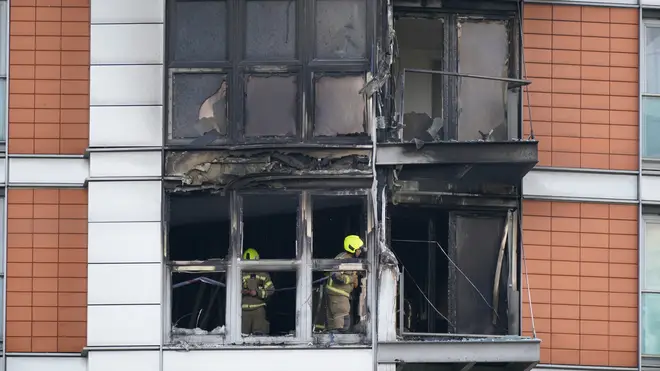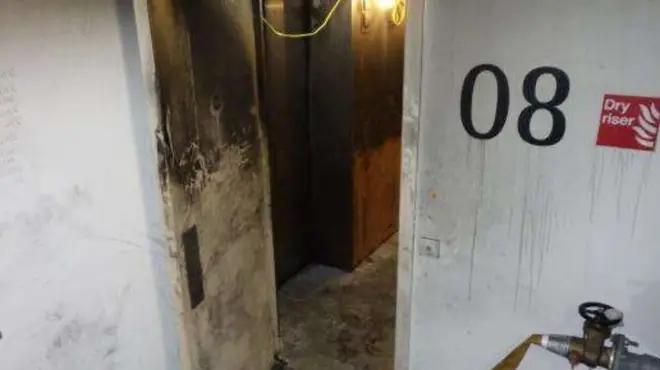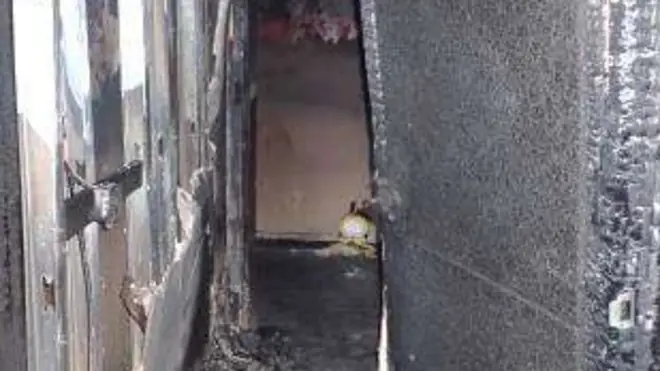
Henry Riley 4am - 7am
1 June 2021, 14:59 | Updated: 1 June 2021, 16:00

A serious failure of the ventilation system meant the only escape route from apartments in east London was filled with smoke during a blaze last month.
A report into the fire at the New Providence Wharf development, near Canary Wharf, found a serious failure of the smoke ventilation system meant residents' only escape route was smoke-logged, while timber decking may have contributed to its spread.
Two people were rushed to hospital for treatment after suffering the effects of smoke inhalation and another 38 adults and four children were treated at the scene after a fire ripped through the 19-storey block in May.
READ MORE: Two hospitalised and firefighter injured in blaze at east London flats
In the report released on Tuesday, the London Fire Brigade (LFB) said the building acted like a "broken chimney" after the smoke detectors failed to operate its automatic opening vent (AOV) and fire doors.
The blaze started in the fuse box in an eighth-floor flat and then spread rapidly out of an open balcony window up another three floors, the report said.


It read: "The point of origin for the fire has been determined as being the consumer unit (commonly known as a fuse board).
"Following the multi-agency scene examination, the fire will be recorded as being an accident, with no evidence whatsoever to indicate a deliberate act being found.
"The most probable cause of the fire has been determined as being an event within the consumer unit, which then resulted in its plastic enclosure/casing catching on fire and then in turn spreading to other combustible materials."
It continued: "The smoke detectors should have operated the automatic opening vent (AOV) and cross corridor doors on the eighth floor. However, it is known that none of these systems actuated.
"This allowed smoke and the products of combustion to flow through the common parts of the eighth floor (and subsequently beyond) making it difficult/impossible for persons on this floor to escape safely, while increasing the challenges and risks for firefighting and search and rescue operations within the building."
It added that the building's timber decking on the balconies "supported the external flame spread up the outer face of the building".
Reacting to the report, Canary Wharf Councillor Andrew Wood called on the Government to "get wood balconies removed" from tall buildings but also praised firefighters for responding just minutes after the first call.
"Excellent response clearly showing Grenfull lessons," he tweeted.

But LFB said the building's aluminium composite material polyethylene (ACM PE) cladding - similar to that used on Grenfell Tower - "did not significantly contribute to the external spread of the fire".
London Fire Brigade deputy commissioner Richard Mills said: "The smoke ventilation system inside New Providence Wharf acted like a broken chimney leading to a potentially life-threatening situation.
"Had it not been for the exceptional actions of our firefighters and 999 control officers this could have had tragic consequences.
"Despite our response to this fire and drawing on the many lessons learned from the Grenfell Tower fire, in many cases we are sadly still not seeing a culture change in all those responsible for fire safety in high-rise buildings.
"The New Providence Wharf fire needs to be an urgent wake-up call to all building owners and managers.
"Look at the fire safety solutions inside your building and take action if they are not performing correctly. It is too late to wait for a fire to see if they work."